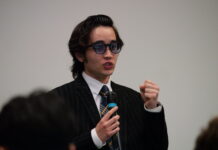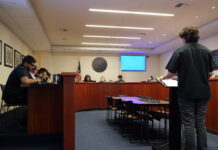 The University of California continues to make great strides in cutting back resource consumption and reducing energy usage. According to the 2011 UC Annual Report on Sustainable Practices discussed at the Jan. 18 Board of Regents meeting, the UC system is saving $32 million per year after investing in energy efficiency projects.
The University of California continues to make great strides in cutting back resource consumption and reducing energy usage. According to the 2011 UC Annual Report on Sustainable Practices discussed at the Jan. 18 Board of Regents meeting, the UC system is saving $32 million per year after investing in energy efficiency projects.
Funding for the projects was made possible by $150 million in campus contributions and external financing, along with $47.5 million in grants from the Energy Efficiency Partnership with community colleges and the California State University system. The projects entail the refurnishing of lighting, heating, ventilation and air conditioning units to become eco-friendly.
In 2011, 38 additional Leadership in Energy and Environmental Design (LEED)-green certified facilities were installed on UC campuses, giving the University of California a total of 87 facilities. The UC system continues to be a leader in sustainable and safe operational practices, earning 12 national and state awards.
UC Riverside Sustainability Campus Coordinator John Cook believes that working with LEED guidelines will help lower gas emissions, improve air quality and promote a healthy campus environment. “The different ways in which we build buildings, handle materials, and utilize renewable resources all create a ripple effect in which greatly impacts our environmental conservation and sustainability efforts here at UCR,” said Cook in an interview with the Highlander. Cook lists several green initiatives of the UCR sustainability program, including installing energy-efficient light bulbs, minimizing paper usage, converting waste into reusable resources and helping launch a variety of green projects across the campus.
The UCR Highlander Union Building (HUB) engages in multiple environmental efforts. Dining Services, the HUB’s largest tenant, undertakes several measures to reduce waste production. In an interview with the Highlander, HUB General Manager Cedric Martin mentioned the compost program, the biodegradable trays and utensils, and using some naturally grown, sustainable food as some of the sustainable initiatives being undertaken. Anthony Briseño, a UC Riverside food service employee stated, “Dining service’s green initiatives are great first steps in reaching out to find ways in reversing UCR’s environmental damage and furthering a greener campus.”
Daniela Martinez, the Head of Sustainable Committee, works with the UC Riverside residence halls to implement many ongoing programs that promote energy and resource efficiency. Some recent events held include “Scary Facts,” “The Wall of Environmental Oppression,” and “Recyclemania.” In an interview with the Highlander, Martinez said, “The aim of our events is to spread the word to our residents about our environmental impact in the world. We also provide many reusable supplies, and take measures to ensure water and energy conservation.”
The University of California campuses have adopted the LEED guidelines into their green building, construction, operations and maintenance framework. Created by the U.S. Green Building Council, the LEED certification program evaluates and ensures that buildings are proficient in areas of sustainable site development, water savings, energy efficiency, materials selection and indoor environmental quality. The LEED 100-point rating scale consists of four levels of certification starting at Certified, followed by Silver, Gold and then Platinum. Seven Platinum facilities now grace the UC campuses. According to the UC Sustainability Policy, all building projects approved after 2009 must undergo LEED certification and meet a minimum standard of Silver.
UC’s Policy on Sustainable Practices, issued on June 2004, presents stewardship objectives for the University’s campuses in eight areas of sustainable practices: green building, clean energy, sustainable transportation, climate protection, sustainable operations, waste reduction and recycling, environmentally preferable purchasing and sustainable food-service. A potential ninth area of coverage, water conservation and storm-water management, is currently being considered
The University of California’s commitments by 2020 include sinking gas emission amounts down to 1990 levels, having no waste output to landfills and having sustainable sources account for 20 percent of campus-served foods. As reported by the UC Newsroom, current energy level achievements have curbed the release of 168,000 metric tons of greenhouse gases—approximately 10 percent of UC’s 2010 carbon footprint. The UC will plan on achieving a net-zero carbon footprint upon reaching its 2020 target levels.








